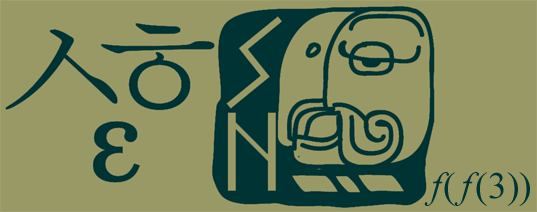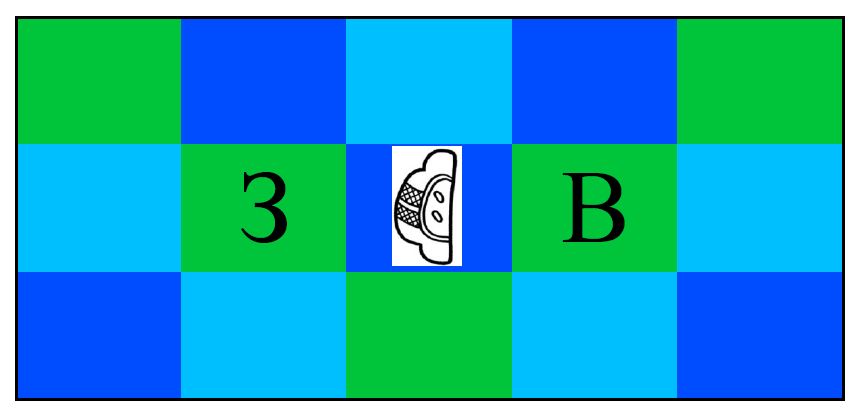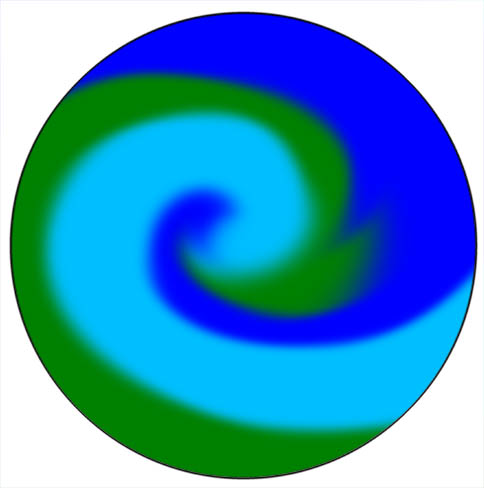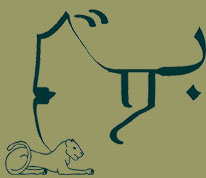 |
 |
|||||||
 |
 |
|||||||
 |
||||||||

the 2n-ions series
The program:
Much like the hyperoperator pieces, the 2n-ion pieces have programs that are built around fanciful takes on an abstract mathematical idea. The geminating idea in this case is the structure behind the "hypercomplex numbers" (there are actually lots of different possible interpretations of this term; for anyone interested I'm mostly thinking specifically about the Cayley-Dickson construction, which is really the only one I know much of anything about). I wouldn't be able to explain the details of this concept, but I think I can explain enough to at least understand the overall programs of the works in this series.
Whether you remember the meaning of the term, you're almost certainly familiar with the so-called Real numbers, usually symbolized \( \mathbb{R} \). The Reals include all of our most familiar numbers like \(5\), \(\sqrt[3]{31}\), \(\pi\), \(\frac{2}{3}\) and \(315.73\). You might also remember that at some point you were introduced to the so-called "Imaginary" numbers—one of the worst terms in all of mathematics, since they are no more (or less!) "imaginary" than any other numbers—and that these could be combined with the Reals in order to get the Complex numbers, symbolized \( \mathbb{C} \). A few important things to remember:
- the Real numbers are also Complex numbers, it's just that the Complex numbers also include a lot of numbers that aren't real. In this sense, the set of the Complex numbers is strictly bigger than the set of Reals, because it contains them, but has many, many other elements besides. One fancy way to write it is to write:
$$
\mathbb{R} \subset \mathbb{C}
$$
which is read "the real numbers are a subset of the complex numbers," and is similar to something you'll see in most of the piece titles in this series.
- An example of a complex number is \(2 + 3i\). It's natural to think that this is actually two numbers, but it really is just a single complex number.
- In a sense, the real numbers are one-dimensional numbers, while the complex numbers are two-dimensional. That's why it often takes what looks like two "numbers" to write a complex number. \(2+3i\) is a single number, but it's a two dimensional number, represented by a point that is 2 units in one direction, and 3 in a different direction.
So if we take our usual real numbers, and add a new kind of number, \( i \), which is equivalent to \( \sqrt{-1} \), we get the complex numbers. What far fewer people learn is that we can keep going, adding new kinds of "imaginary" numbers and generating higher-dimensional kinds of numbers. The first new kind to be discovered—by an Irish mathematician named William Rowan Hamilton—are called the quaternions and are usually symbolized \( \mathbb{H} \) in honor of their discoverer. Our old friends the reals live in the quaternions, as do the complex numbers, in other words \( \mathbb{R} \subset \mathbb{C} \subset \mathbb{H} \), but there are also scads of new numbers, created by the addition of two new kinds of "imaginary" numbers often symbolized \( j \) and \( k \); thus these are four-dimensional numbers such as \( 4+3i+5j+k\). There are several handy uses for these numbers, especially in computer programming involving 3d animation, but what I'm interested in for the program of these compositions is the fact that one aspect of arithmetic we take for granted with more familiar numbers, called "commutativity," essentially "breaks" when we move into the quaternions.
\(3 \times 2 = 6 \), but so does \(2 \times 3 = 6 \). It doesn't matter what order we multiply the numbers in, we get the same result. The same thing is true for the complex numbers: \(3i \times 2i = -6\) and \(2i \times 3i = -6\), it doesn't matter. This is not true for quaternions, however. For example, while \(3i \times 2j = 6k\), it turns out that \(2j \times 3i = -6k \). Commutativity breaks when we move into the higher-dimension.
We can continue into the next kind of hypercomplex number by moving up into 8 dimensions, entering the world of the octonions, or \( \mathbb{O} \). The octonions contain all the kinds of numbers from before, but have all kinds of new numbers. A fairly common way to write them is to label the various "imaginary" dimensions with \(e_1\), \(e_2\), \(e_3\), \(e_4\), \(e_5\), \(e_6\) and \(e_7\), which is another aspect you will see in most titles in this series. As in the quaternions, the order of multiplication matters, but a new aspect of arithmetic that we usually take for granted gets broken when we move into eight dimensions: associativity. For example, we're very used to the idea that, when we're multiplying more than two numbers together, it doesn't matter which pairs we multiply first. That is: $$ (3 \times 2) \times 4\\ 6 \times 4\\ 24 $$ just like $$ 3 \times (2 \times 4)\\ 3 \times 8\\ 24 $$ This kind of thing is still true in the quaternions: $$ (3i \times 2j) \times 4k\\ 6k \times 4k\\ -24 $$ while at the same time $$ 3i \times (2j \times 4k)\\ 3i \times 8i\\ -24 $$ But all of this seemingly normal math completely breaks down in the land of the octonions: $$ (3e_1 \times 2e_2) \times 4e_6\\ 6e_3 \times 4e_6\\ 24e_5 $$ but, shift the groupings and you get: $$ 3e_1 \times (2e_2 \times 4e_6)\\ 3e_1 \times -8e_4\\ -24e_5 $$
The next step is to go to the 16-dimensional Sedenions, \(\mathbb{S}\), where we gain all kinds of new numbers (including imaginary dimensions from \(e_1\) to \(e_{15}\)), but we completely lose the ability to divide in any way close to the division we're familiar with. This is the overriding theme of the works in this series, more and more elements are gained in each new section of the piece, but with a concomitant loss of coherence, usually leading to total chaos. The original idea just involved increasingly complex pitch collections that have messier and messier interactions with each other, but after a while these pieces also became the main place where I've been exploring extended just intonation. For example, I wrote a solo EJI cello piece that begins with a movement that uses nothing but a single pitch, then adds multiple octaves in the second movement. In the third movement, perfect fifth and fourths are added, which also opens the floodgates of chromatic pitch. By the final movement, a vast array of new intervals are available, but the meanings and audibility of the differences have all but disappeared. The added power of new vocabulary quickly builds to an almost total breakdown of musical grammar.
The structure:
Pieces in this series:
PortRait of the ArTist,**NYC2001
Solo Cello and Recorded Electronics
Summer '01
more info







